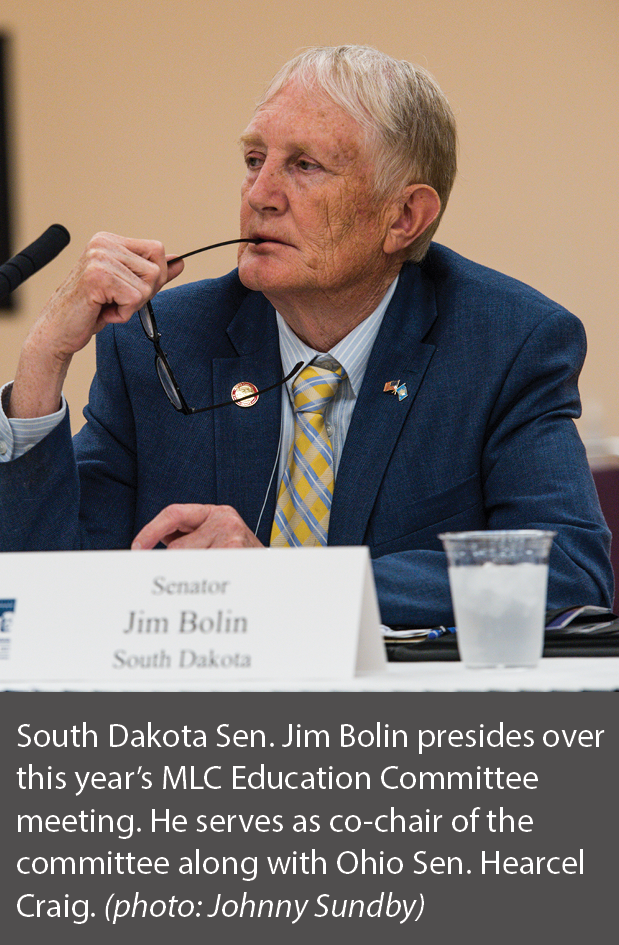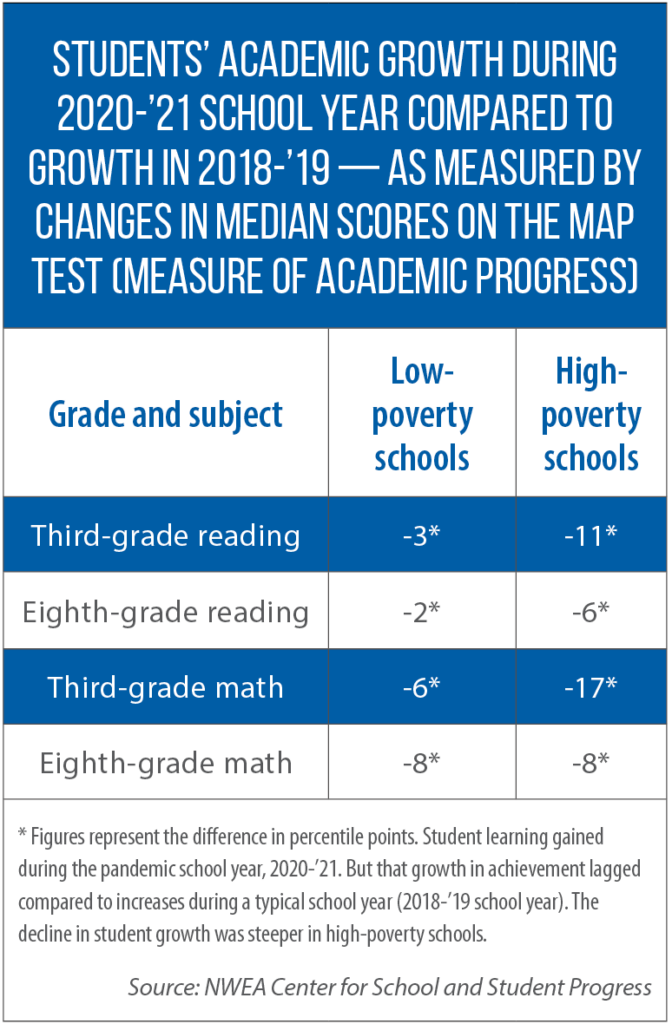‘Short-term’ or ‘generational’ impact? Critical choices ahead in mitigating learning loss from past school year
A look back at the last school year is a reminder of the educational imperatives that lie ahead for states and their school districts.
Tiffany Sanderson, secretary of the South Dakota Department of Education, put the stakes this way to lawmakers who attended a July session of the Midwestern Legislative Conference Annual Meeting: Effectively re-engage students who were chronically absent or who fell behind academically due to a year of instructional disruptions and alterations, and you’ve contained the problem to a “short-term educational impact.” Fail to do so? Then it becomes a “generational impact.”
Sanderson was one of two expert presenters at this session organized by the MLC Education Committee. She and the second speaker, Phillip Lovell, focused on the impacts of COVID-19 and related policies on student achievement.
“There are now even greater gaps in learning, especially among our historically underserved students,” said Lovell, associate executive director of the Alliance for Excellent Education.
Nationwide analyses comparing academic gains during two different school years — the pandemic year of 2020-’21 vs. the non-pandemic year of 2018-’19 — show that minority and low-income students were hit the hardest.
“Students who were more likely to be in remote learning … were less likely to have access to the technology they needed [for remote learning],” Lovell said. “It was a bad combination.”
In South Dakota, during a typical year, about 3 percent of students miss 30 or more days of school. That rate of chronic absenteeism more than doubled in 2020-’21, Sanderson said. These higher rates tended to be in schools providing virtual rather than in-person learning. More than half of the state’s chronically absent students were Native American and 80 percent were low-income.
Lovell singled out three post-pandemic challenges for all states to address. One is helping students catch up from lost learning opportunities over the past year. Options include developing summer learning and enrichment activities, extending the school day and year, and investing more in tutoring and evidence-based interventions. He also emphasized the importance of closing digital divides that leave students without access to high-speed home internet.
Lastly, he said, new policies are needed to improve postsecondary readiness. Currently, only about 37 percent of graduating high school students are prepared for college-level math and reading; 70 percent of beginning students at two-year colleges require remedial coursework.
According to Lovell, states can improve these numbers in part by strengthening the rigor of K-12 curricula and expanding access to college-credit courses. He singled out a competency-based education model in Georgia known as “Move on When Ready,” a requirement in Indiana that high schools offer two advanced-placement and two dual-enrollment courses, and a new law in California that incentivizes schools to develop high-quality career and technical education courses.
$123 billion opportunity
One huge new opportunity for states: the American Rescue Plan Act, which sets aside $123 billion for states and school districts to spend on education between now and 2026.
“There are often strings attached to money that comes from Washington,” Lovell said. “These [dollars] have as few strings as possible attached to them.”
In South Dakota, the money will go to three priority areas, Sanderson said. One is improving the recruitment and retention of educators. The second is better addressing the social-emotional needs of young people, an area that Sanderson said was the “highest need expressed” during recent listening sessions held across the state. Lastly, South Dakota will explore new ways of delivering instruction, with less emphasis on seat-time requirements in favor of a personalized, competency-based model.
“Help students accelerate when they’re ready to do so,” she explained, “and have more time and attention given where they might be at risk or in need of additional supports.” To advance the competency-based model, South Dakota is investing in new teacher training and expanding the availability of digital-learning options.